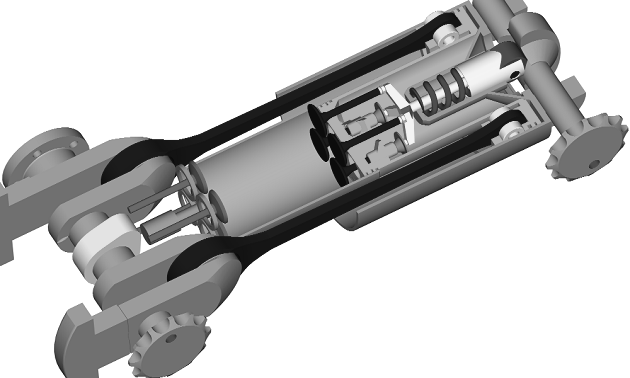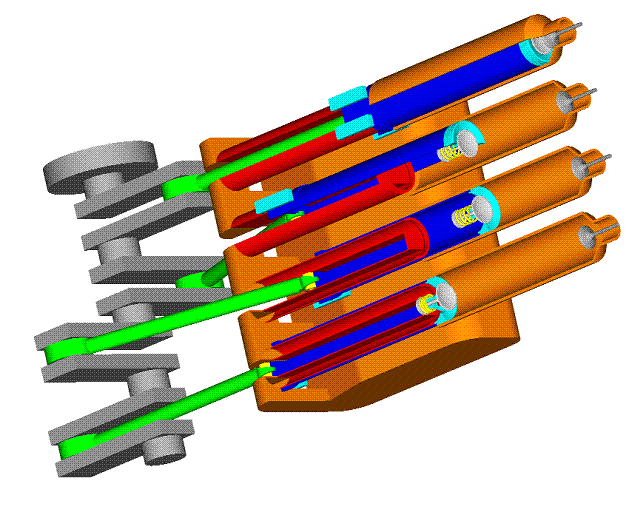Hello Gruntguru.
You write:
“An Aussie company Rotec, developed a process for converting 4T diesels to 2T with moderate success. The motivation was increased airflow at the same power output resulting in useful emissions reductions. This to retrofit trucks in the US to meet later smog regs.”
A Rotec-modified 2-stroke Diesel has true-four-stroke lubrication and true-four-stroke scuffing resistance.
But it has also half valve-time-area as compared to the original 4-stroke Diesel, giving about the same peak power (at lower revs).
Quote from
http://www.pattakon.com/pattakonPatPortLess.htm for the PatPortLess engine:
It is a port-less through-scavenged two-stroke engine.

With the cylinder-liner rid of intake and exhaust ports, this engine combines:
true "four-stroke" lubrication,
true "four-stroke" specific lube consumption,
true "four-stroke" scuffing resistance,
uniflow scavenging efficiency,
double valve-area and
some 30% longer piston dwell at the CTDC (Combustion Top Dead Center).
Valve-time-area:
A similar four-stroke engine has nearly the same valve-time-area with the PatPortLess (the time halves, but the valve-area doubles) resulting in a similar energy per explosion at the same revs; for every power explosion of the four-stroke they happen two power explosions of the PatPortLess, giving nearly double power.
In comparison to the conventional port-less two-stroke engines (transfer and exhaust poppet-valves on the cylinder head, loop-scavenged) the valve-area of the PatPortLess is double, resulting in double valve-time-area at the same revs (i.e. double power density)
Lubrication:
The piston and the piston rings are lubricated by the crankcase lubricant as in the conventional four-stroke engines, while the working medium is isolated from the crankcase lubricant as the working medium of the conventional four-stroke is isolated from the crankcase lubricant.
In the PatPortless the air sees no more lubricant oil than what it sees in the conventional four stroke engine
Longer piston dwell:
Unlike the conventional engines wherein the connecting rods are push-rods, the connecting rods of the PatPortLess are pull-rods: they are heavily loaded only in tension; the loads try to straighten / to unbend them (thinner and lightweight con-rods).
The PatPortLess arrangement shifts the combustion to the slow dead center.
In a conventional engine having a "connecting rod to stroke" ratio equal to 2, the crank angle during which the piston remains at the top 10% of its stroke is 66.2 degrees.
In a PatPortLess having a "connecting rod to stroke" ratio equal to 2, too, the crank angle during which the piston remains at the top 10% of its stroke is 83.9 degrees.
At the same revs (rpm), the piston of the PatPortLess remains in the top 10% of its stroke for 27% more time than the piston of the conventional (83.9/66.2=1.27).
Equivalently, when the PatPortLess operates at 27% higher revs than the conventional, the pistons of both remain in the top 10% of their strokes for the same time. For instance, when the abovementioned PatPortLess operates at 6000 rpm and the abovementioned conventional operates at only 4.750 rpm (=6000/1.27), the pistons of both remain in the top 10% of their strokes for (83.9/360)*(60/6000)=0.00233 seconds.
For lower "connecting rod to stroke" ratios, things get worse for the conventional.
For shorter intervals near the CTDC (say 5% of the piston stroke instead of the 10% used in the previous comparison), things get worse for the conventional.
In a reciprocating engine having 15:1 compression ratio:
when the piston has covered 5% of its stroke moving away from the Combustion TDC, the "remaining" expansion ratio has drop to 8.8:1; any quantity of fuel burned at that moment would undergo an expansion ratio of 8.8.
when the piston has covered 10% of its stroke moving away from the Combustion TDC, the "remaining" expansion ratio has drop to 6.25:1; any quantity of fuel burned at that moment would undergo an expansion ratio of only 6.25.
Thanks
Manolis Pattakos




